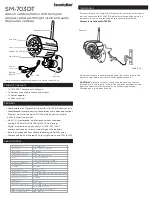
V1.02
Thom Hogan’s Complete Guide to the Nikon D300
Page 704
White balance intersects with other digital imaging color
issues on a D300. First, the photosites covered with blue
filters are effectively less sensitive to light than the green or
red ones. In low light conditions, this can be troublesome,
especially if you’re shooting in a situation where little or no
blue wavelengths are present in the first place. At one
extreme, you get noise in the channel that has little light
energy hitting it; at the other end you can get a blown
channel because too much light hit it.
Since the histograms are created from the embedded JPEG in
NEF images and the camera’s white balance setting is used for
that JPEG, setting a “wrong” white balance can produce
misleading histograms. If you shoot NEF images, use the
correct white balance setting or at least a white balance of
Auto
.
Second, many of Nikon’s choices for white balance settings
are slightly suspect—either Nikon knows something about the
photosite sensitivity and color rendering that they haven’t told
users about, or they’ve chosen values based upon visual
review, or the actual color temperature values reported in the
manual are inaccurate
161
.
Consider the following table:
White Balance Color Temperatures
Lighting
D300
Film
Likely
*
100-watt incandescent
3000K
3200K
2900K
Sunny daylight (noon)
5200K
5400K
5400K+
Overcast 6000K
5400K
7000K+
Flash 5400K
5400K
<6000K
* Source: Nikon Field Guide, typical color temperatures
Using Nikon’s defaults (either in the camera or after the fact
with Nikon Capture NX) tends to produce slightly warm (red)
indoor color, and a slightly cool (blue) outdoor color.
161
Or, I suppose, they could have just gotten it wrong.
















































